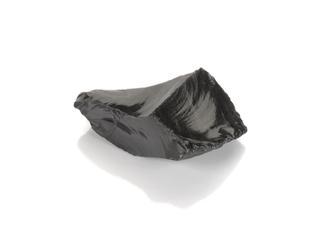
3D printed model of adult kidney
The ureter(?) of the kidney, 3D printed 1:1 model of a right adult kidney prior to a kidney transplant between a father and his two year old daughter, printed using an Objet500 Connex1 with VeroWhitePlus (a photopolymer) at Guys and St Thomas’ Hospital Trust, London, United Kingdom in November 2015 based on a concept by transplant surgeon, Pankaj Chandak, London, UK, 2015
More
These models are from the first ever clinical case to 3D printed models to plan a kidney transplant. Two year old Lucy received a kidney from her father Chris. Until she was old enough to undergo a transplant, Lucy had kidney dialysis three times a week. These models also gave new insights into the tangle of blood vessels in Lucy’s abdomen that were only 1-2 mm in diameter, helping surgeons to plan her surgery even further in advance.
Performing a kidney transplant is challenging, particularly when transplanting a full-sized adult kidney into a toddler’s abdomen. While imaging technologies give surgeons a very good idea about both the donor’s and recipient’s anatomy, sometimes it is not until the surgeon looks inside the body that the full story can be revealed. Decision making becomes more pressurised in the operating theatre environment.
Pankaj Chandak, a specialist registrar transplant surgeon, came up with the idea of using 3D printed models after hearing about its use in children’s cardiac surgery. After winning funding to develop his idea in August 2015, Pankaj worked with transplant specialists Professor Nizam Mamode and Mr Nicos Kessaris, interventional radiologist, Dr Narayan Karunithy, clinical scientist Nick Byrne and Dr Andy Coleman, head of Non-ionizing Radiation Physics, all based at Guy's and St Thomas' NHS Foundation Trust. The models were verified by an expert radiologist and used during multidisciplinary discussion and surgical simulation of cases. Materials chosen to match the bony, hard pelvis and the much softer structures such as the liver and the sidewalls of the abdomen enhanced the tactile experience of them. Pankaj won several awards for his ideas.
- Materials:
- Photopolymer
- Object Number:
- 2016-404/1
- type:
- model - representation
- Image ©
- The Board of Trustees of the Science Museum
















